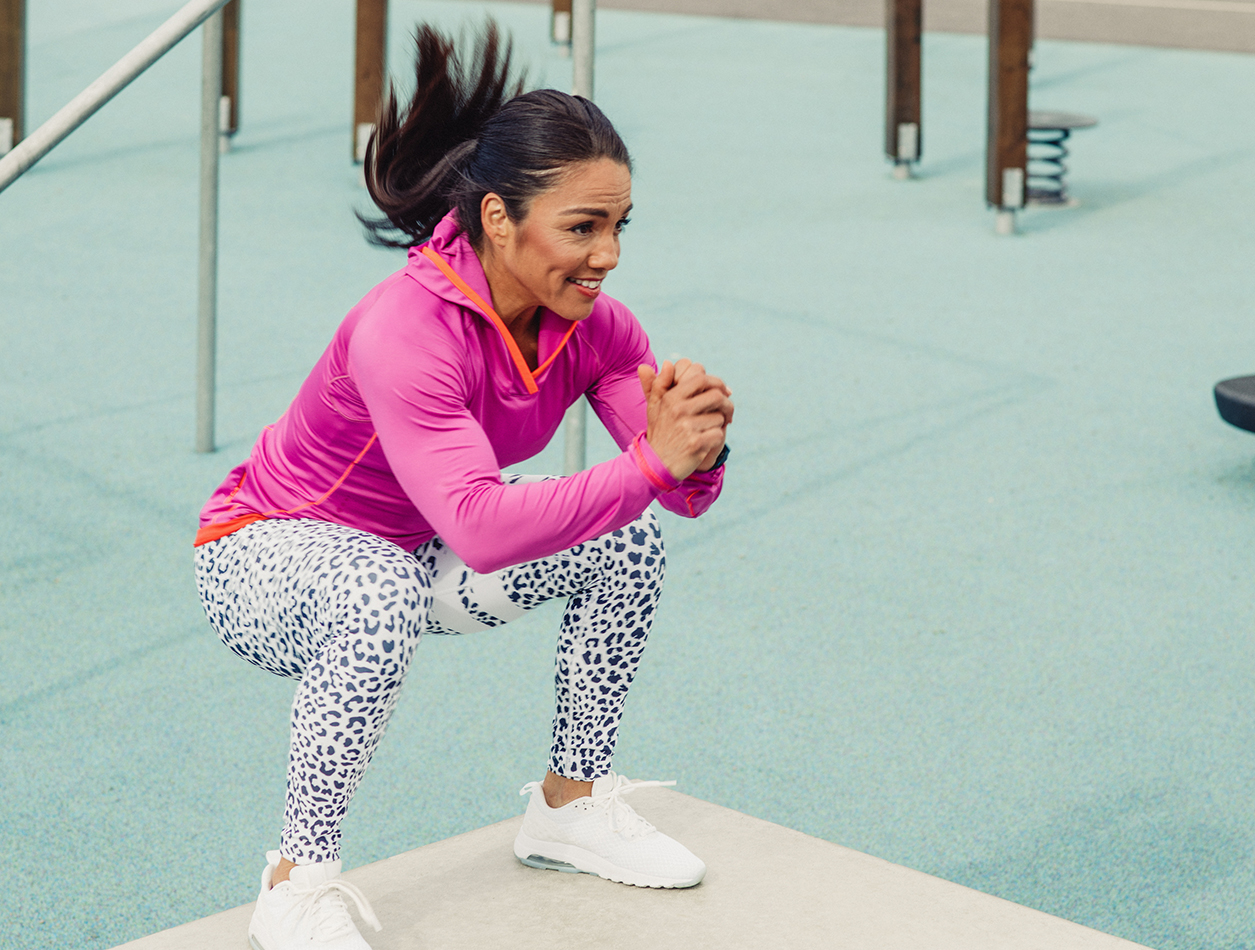
As the popularity of high-intensity interval training (HIIT) and high work rate-type resistance training, also referred to as metabolic resistance training continue to grow, is there an increasing cause for concern? As we continue to look for innovative, time-efficient ways to maximize overload, which in turn can boost caloric burn and enhance the potential for lean mass development, when do the risks of injury and potentially-poor experiences equal or outweigh the benefits? Do we agree that this pursuit of time-efficient workouts that target the elusive calorie, or the desire to be innovative and different, by pushing the programming envelope is leading to unfortunate increase in injury rates? Is it any coincidence that sport and exercise-related injuries; injuries occurring in clubs; and sprain/strain-type injuries have all increased approximately 4% across the board between 1997 and 2007 (1)? Perhaps we need to take the time to examine some of these philosophies a little more closely.
Weight Loss: Many people subscribe to HIIT training to expedite weight loss, so let’s examine the rationale behind using HIIT training with a 145 lbs. (66 Kg) person as an example. Let’s compare the caloric expenditure between a reasonable aerobic training program and a HITT protocol.
- A 60-second work bout at 10 mph (16 km/h) plus 120-second recovery intervals at 3 mph (4.8 km/h) performed 15 times for 45 minutes of exercise at an intensity greater than 85% of maximal performance (assuming intensity can be maintained). This program results in a total caloric expenditure of 454 calories with approximately 91 calories derived from fat as its utilization drops very quickly at intensities beyond 85% of maximal performance (2, 3).
- By comparison, 45-minutes of running at 5.5 mph (8.8 km/h) at an intensity around 65% of maximal performance results in a total caloric expenditure of 490 calories, with about 221 calories being derived from fat as utilization can still be significant at intensities around 65% of maximal performance (3).
- Certainly, a HIIT protocol utilizing very short recovery intervals can increase the overall caloric burn, considering that the individual performs greater volumes of work during the 45-minute session. But will the individual be able to sustain the high level of exercise intensity (i.e., 10 mph) sustained over successive repetitions? This is an important consideration as the drop in work intensity associated with fatigue may lower the overall caloric burn. For example:
- 60 sec x 10 mph with 60 sec recovery (x5 repetitions)
- 60 sec x 9 mph with 60 sec recovery (x5 repetitions)
- 60 sec x 8 mph with 60 sec recovery (x5 repetitions)
- 60 sec x 7 mph with 60 sec recovery (x5 repetitions)
- 60 sec x 6 mph with 60 sec recovery (x2 repetitions)
Although a greater volume of work was performed over the 45-minute period, the total caloric expenditure only equals 431 calories, and the estimation of fat calories is too difficult to estimate mathematically. You can ballpark calorie calculations with a calorie calculator tool though.
Furthermore, it is important to also keep in mind that the American College of Sports Medicine indicates that a total of 2,000 calories per week expended through activity is needed to lose weight. How many sessions (types listed above) would an individual need each week in order to reach that 2,000 calories total, then determine whether our average client is equipped physically, mentally and emotionally to accomplish this feat? In other words, is it feasible to assume a deconditioned client can safely perform such intense exercise multiple times per week, or is this too much to ask?
- HITT and excess post-exercise oxygen consumption (EPOC) or the after burn. LaForgia and colleagues (4) reviewed much of the research done on this topic between the 1990s and early 2000’s and concluded that earlier optimism concerning a critical role for EPOC in weight loss largely was unsubstantiated. However, some studies have attempted to examine EPOCs associated with high-intensity intermittent bouts of exercise and have generally concluded that accurate numbers are too difficult to attain as EPOCs are generally only able to be measured following exercise and not during the rest intervals (5, 6). Consequently, it is possible that the magnitude of EPOCs measured with HIIT may actually be larger than estimated. However, what is known is that that higher intensities of exercise generally elicit larger EPOCs. Knab and colleagues (7) examined EPOCs in 10 males who completed 45-minutes of cycling at 73% VO2max. The caloric expenditure for the exercise session totaled 519 kcal and EPOC remained elevated for 14 hours post-exercise totaling 190 kcal or 13.5 kcal/hour. While this number may sound impressive, it is important to remember that it only represents 5% of a pound. To put this number in a different perspective, one Starburst™ candy contains 20 calories, whereas 5 plain M&M™ milk chocolate candies contain 17 calories. However, three of these sessions per week over a period of 52 weeks equals 29,640 calories or 8.5 pounds (3.8 Kg). Therefore, it may be most important to examine EPOC on a macro level versus a micro level. While EPOC may not affect an individual’s weight immediately following a workout, over an extended period of time EPOC can play a measurable role.
- Health improvements: We know that VO2max and insulin sensitivity both play important roles in preventing mortality and morbidity. Tabata and colleagues (8) demonstrated how HIIT can improve VO2max (10 – 13% improvements) in a time-efficient manner versus longer aerobic sessions. HIIT breaks down stored muscle glycogen faster, causing a need for increased glucose uptake from the blood. During exercise when insulin levels are naturally suppressed (due to our ‘fight or flight’ response), it is improved insulin sensitivity by cells that promotes greater glucose uptake. This helps explain why type II diabetics respond very well to HIIT (9).
- Female Physiology: The consensus of research indicates that females have lower rates of glucose utilization in comparison to men (10). One proposed explanation centers around a lowered ‘fight or flight’ response than men perhaps due to the hormones estrogen and oxytocin. Estradiol, the biological active form of estrogen is also believed to directly limit glycolysis that serves as our primary fuel source during HIIT. Consequently, women can fair well with interval training at moderate to high-intensities, but generally need longer recoveries to restore the anaerobic pathways.
- Psycho-emotional Impact: Fitness professionals should always address the overall exercise experience, especially if the calorie differences prove to be negligible with some HIIT protocols. If our behaviors are strongly influenced by how we think and feel, then how much emphasis do you place upon the perceptions or experiences of exercise?
As professionals we are tasked with a great responsibility of empowering change and fostering positive exercise experiences. Isn’t it therefore time to appreciate the fact that good programming involves the application of exercise science, common sense and creativity, which ultimately drive positive experiences, and not injury? As such, fitness professionals should design individualized training programs based on their client’s goals, needs, and abilities. Deconditioned clients may be best suited for less intense exercise until they are physically and emotionally able to handle more intense bouts of physical activity. Once a base level of fitness is reached, inclusion of HIIT training programs may offer further benefits for clients seeking greater physiologic adaptations.
References:
- Centers for Disease Control and Prevention (2009). Injury episodes and circumstances: National Health Interview Survey, 1997-2007, Vital and Health Statistics, 10 (241).
- American College of Sports Medicine, (2014). ACSM’s Guidelines for Exercise Testing and Prescription (9th Edition). Baltimore, MD: Lippincott, Williams and Wilkins.
- Juekendrup, AE, (2002). Regulation of fat metabolism in skeletal muscle. Annals of New York Academy of Sciences, 967: 217 – 235.
- LaForgia J, Withers RT, and Gore CJ. (2006). Effects of exercise intensity and duration on the excess post-exercise oxygen consumption. J Sports Sci. 24:1247–1264.
- Laforgia, J., Withers, R.T., Shipp, N.J., and Gore, C.J. (1997). Comparison of exercise expenditure elevations after submaximal and supramaximal running. Journal of Applied Physiology, 82(2), 661-666.
- Nummela A, Rusko H. (1995). Time course of anaerobic and aerobic energy expenditure during short-term exhaustive running in athletes. International Journal of Sports Medicine, 16:522–527.
- Knab, AM, Shanely, A, Corbin, KD, Jin, F, Sha, W, and Neiman, DC, (2011). A 45-minute vigorous exercise bout increases metabolic rate for 14 hours. Medicine and Science in Sports and Exercise, 43:1643 – 1648.
- Tabata, I, Nishimura, K, Kouzaki, M, Hirai, Y, Ogita, F, Miyachi, M, and Yamamoto, K, (1996). Effects of moderate-intensity endurance and high-intensity intermittent training on anaerobic capacity and VO2max. Medicine & Science in Sports & Exercise, 28(10): 1327 – 1330.
- Little, JP, Gillen, JB, Percival, ME, Safdar, A, Tarnopolsky, MA, Punthakee, Z, Jung, ME, & Gibala, MJ, (2011). Low-volume high-intensity interval training reduces hyperglycemia and increases muscle mitochondrial capacity in patients with type 2 diabetes. Journal of Applied Physiology, 111: 1554 – 1560.
- Tarnopolsky, MA, (2008). Sex Differences in exercise metabolism and the role of 17-beta estradiol. Medicine and Science in Sports and Exercise, 40(4): 648 – 654.

